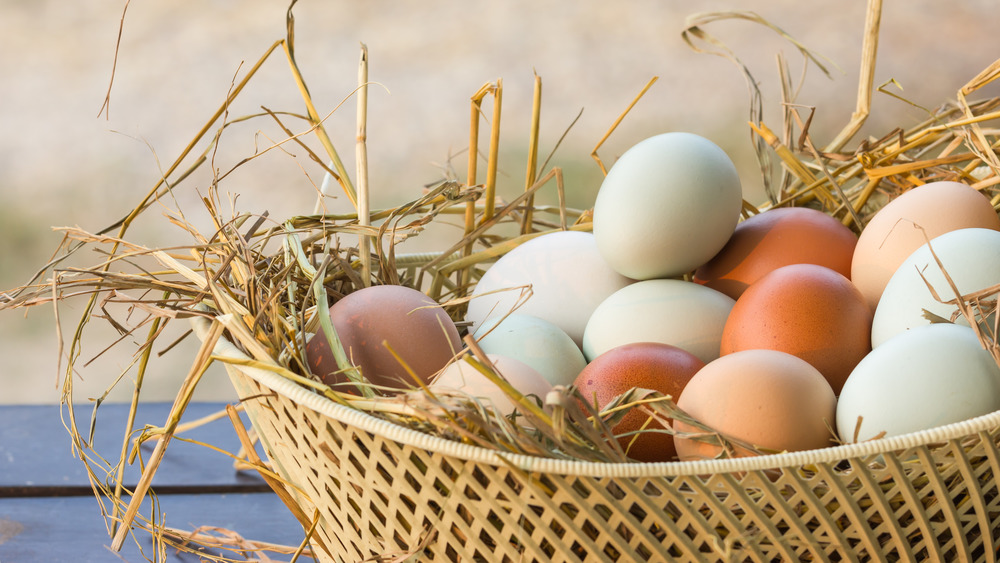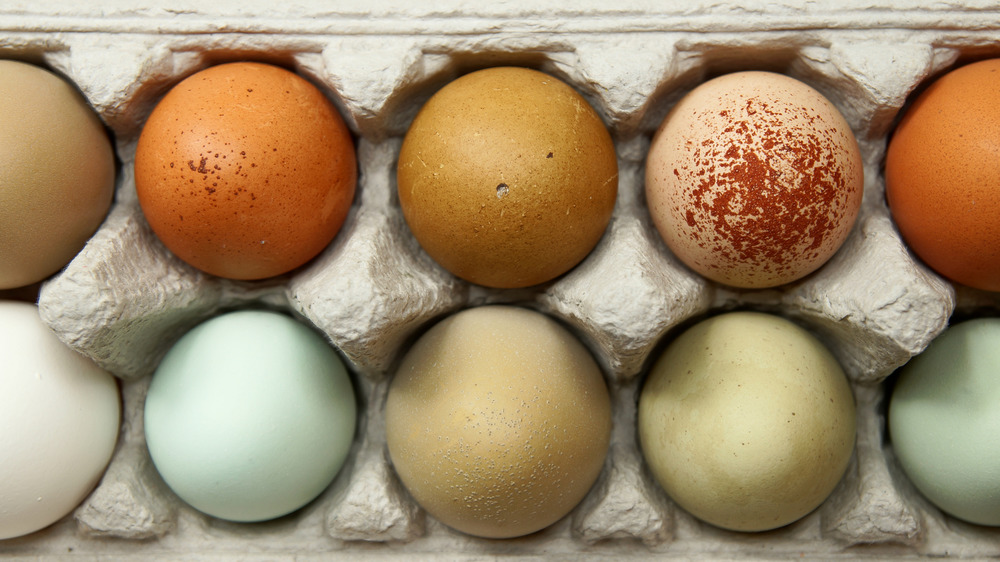Can You Eat Purple Eggs?
It's not Easter. The eggs aren't dyed. Yet there you sit with purple egg. Can you indulge in a scramble or a soft boiled egg without a subsequent trip to urgent care?
While most of the eggs you find at the supermarket are white or brown, head to a farmer's market and you'll find a rainbow of colors to choose from. According to Fresh Eggs Daily, chicken eggs come in a variety of colorful shades, including blue, green, pink, cream, brown, and everything in between. Hobby Farms adds that vibrant egg colors like rose, olive, and rich, caramel-like brown can make your egg purchasing experience that much more enchanting.
Where do these magical eggs come from? The Happy Chicken Coop explains that it takes 26 hours for a hen to produce an egg, and 20 of those hours are required to form the shell. And because eggshells are predominantly made of calcium, all eggs start out as white. But then things get interesting. As the egg forms in the hen's uterus, some chicken breeds release pigments called porphyrins, which color the shell. Different colored pigments are released at different points in the process, which results in a variety of egg colors.
Which came first, the chicken or the colorful egg?
That's up for debate, but egg color is not. It is determined solely by the hen's genetics, and she can produce just one color (sadly, she won't lay blue eggs on Tuesday and green eggs on Friday). Know Your Chickens explains that it has nothing to do with the hen's diet, but rather her breed. The site says you can often (but not always) predict egg color by looking at a hen's earlobes — white earlobes indicates white eggs and red earlobes suggests brown eggs.
Purina Mills adds that crossing different breeds creates even more colors and shades, such as deep pink, dark green, and speckled. When it comes to the purple egg though, Backyard Chickens states that it's the Marans chicken breed that produces brown eggs with a purple bloom. What is the bloom you ask? Chicken Whisperer Magazine describes the bloom as the outermost layer of an egg, which is created right before it's laid.
Do colored eggs taste any different? Morning Chores is quick to remind us that all eggs start out white, and pigment is added (or not) during egg formation. Pampered Chicken Mama adds that colored eggs and white eggs taste the same; it's not the color of the shell that makes the difference, it's the quality of the hen's diet.

